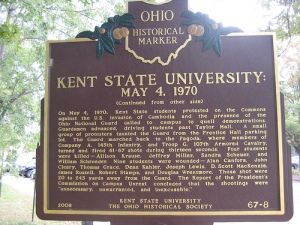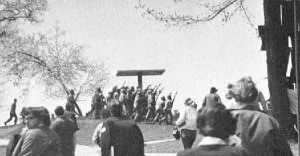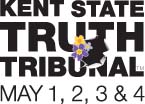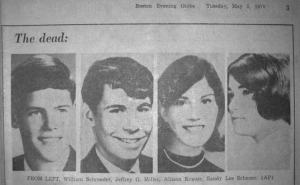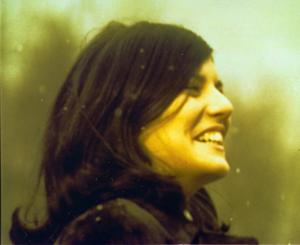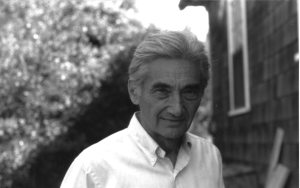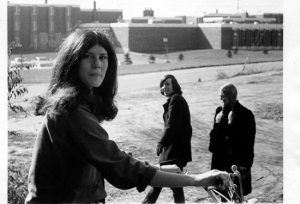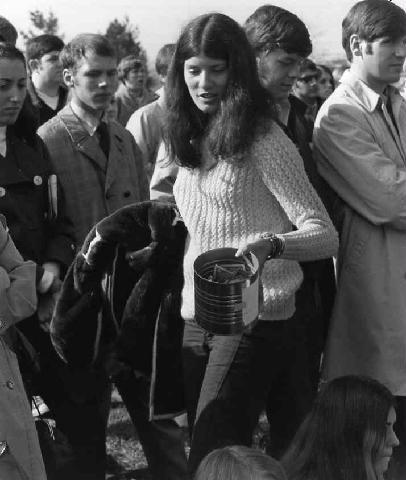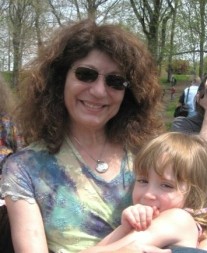Editor’s Note: To learn more about the Kent State Truth Tribunal 2010, please go to www.TruthTribunal.org and pre-register to participate as well as support us with your generous donation. Thanks!
Kainah, The Daily Kos, May 24, 2006
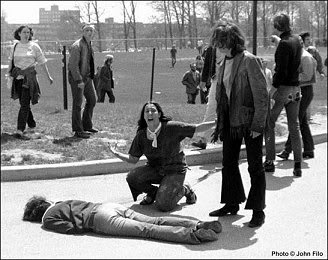 At 12:24 pm on May 4, 1970, twenty-eight Ohio National Guardsmen opened fire on the Kent State campus. When the shooting stopped, four students lay dead or dying while an additional nine had suffered wounds ranging from minor to life-threatening. The shootings had lasted thirteen seconds but legal repercussions would continue for nearly a decade.
At 12:24 pm on May 4, 1970, twenty-eight Ohio National Guardsmen opened fire on the Kent State campus. When the shooting stopped, four students lay dead or dying while an additional nine had suffered wounds ranging from minor to life-threatening. The shootings had lasted thirteen seconds but legal repercussions would continue for nearly a decade.
In Part I, we look at Nixon’s curiously timed announcement of the Cambodian invasion and the May Day rally at Yale University. Part II examines the events of that weekend at Kent. Part III explores the events of Monday, May 4. Part IV deals with the immediate aftermath of the shootings. Part V looks at the various investigations following the shootings. Part VI examines the federal grand jury and criminal trial of eight guardsmen. Part VII concludes the series by examining the years of civil proceedings.
In memory of Jeffrey Miller, Allison Krause, Bill Schroeder, and Sandy Scheuer, join me in exploring the aftermath.
(First, let me apologize that it has taken three weeks to continue this series. The reaction to my May 4 diary was absolutely overwhelming and it left me emotionally and physically exhausted. This, then, is offered as a “bonus edition” in the series, dealing with the immediate aftermath. Part V will cover the legal aftermath. Now, on with the story…)
News of the shootings spread quickly across the country that May afternoon. The first reports claimed that two Guardsmen had been shot. Whether disinformation or a mistake, many heard this news and took it as evidence of the deadly intent of the student protesters. However, within hours, the truth of students shot and killed overtook the earlier rumors. As parents and friends tried to connect with those in Kent, the phone lines jammed and then, in mid-afternoon, crashed. The inability to get accurate information in or out heightened anxieties. For four families, the incomprehensible news of the shootings would give way to the heartbreaking realization that their children were gone forever.
Sarah Scheuer was painting the house on May 4, her twenty-seventh wedding anniversary, when she heard news of the shooting. She immediately tried to call Sandy’s house but it took several hours to get through. When she finally did, one of Sandy’s roommates told her that she better come right away: “Sandy’s in the hospital, but that’s all we know right now.” The roommate also told Sarah that Sandy’s wallet was still in the house. Sarah then called Robinson Memorial Hospital in Ravenna and asked whether there was a wounded girl, dressed in a red shirt and blue jeans, with no identification. The administrator she spoke with wasn’t sure but confirmed that at least one of the injured girls had no identification. Sarah and her husband, Martin, quickly left their home in Boardman, near Youngstown, for Ravenna. At the hospital, they asked about Sandy. A police officer overheard them and, assuming they’d heard the news, asked if they had come to identify the body. Still hoping there was a mistake, Sarah asked if the unidentified girl was wearing a gold ring with a blue stone. The policeman went into the morgue and returned to confirm that, yes, the girl was wearing such a ring. After the morgue had been cleared of the other dead students, the Scheuers were allowed in to identify Sandy.
Jeff Miller’s mother, Elaine, heard about the shootings on the radio as she drove home from work in Long Island. She decided then and there to make Jeff come home because it just wasn’t safe in Kent. At home, she called Jeff’s off-campus apartment. Although by this time in late afternoon, the phone system was severely overloaded, Elaine’s call somehow got through on the first try. The phone rang and rang and rang. Finally someone picked up. Elaine asked to speak with Jeff. The voice on the other end asked “Who is this?” When Elaine, annoyed by the question, replied, “It’s his mother,” the boy replied bluntly, “He’s dead.” Elaine began to shriek. Her husband-to-be, who had followed her home, found her in a heap at the end of her bed, still holding the phone and screaming incoherently. Later that night, Jeff’s father and brother flew to Ohio to bring Jeff’s body home. When shown his son’s body in the morgue, Jeff’s father initially refused to identify him. His face had been so badly damaged by the bullet wound, Bernard Miller simply couldn’t recognize him. After the shock wore off, he realized that, indeed, this was his son. Later, this event would be twisted by those who wanted to paint the student victims as worthless agitators deserving of their fate. “Did you hear,” the rumor mill asked, “that Miller’s own father couldn’t recognize him because he was so dirty?” Back in New York, the funeral director advised Jeff’s mother not to view his body because of the extensive damage. Still in shock, Elaine accepted that advice and regretted it for the rest of her life. Months later, the high school that Jeff attended (and where his mother and would-have-been stepfather worked) held a memorial service for him. A boyhood friend told the crowd: “Like many of us, (Jeff) left for college confused, seeking answers and trying to legitimize his own existence. Now his search has ended. A National Guardsman’s bullet has brought him the final reality. Dust to dust – another statistic – why should the world notice?” He finished his eulogy with a poignant question: “Jeff, friend, you as much as anybody typified the fact that we all march to the beat of a different drummer. Why didn’t you tell me it was going to be a procession?”
For several hours after the shootings, reports indicated that a “William Schneider” was among those killed. Back at Bill Schroeder’s apartment, his roommates waited for Bill to return. When the 5:00 curfew came and went without Bill appearing, his roommates got “that sick feeling” that William Schneider was really William Schroeder. Around 5:15, one of Bill’s friends got through to the apartment and he told Bill’s roommates that he had seen Bill after he was shot, but that he was just wounded. Bill’s roommate, Lou Cusella, then called the hospital to ask if William Schneider had been positively identified. The hospital said he hadn’t. The hospital urged Cusella to call State Senator Robert Stockdale, a professor at Kent State, who had been given the job of notifying the victims’ families. Stockdale asked Cusella if he would be willing to go to the morgue to try to identify his friend. Cusella agreed, reluctantly, and soon thereafter, a sheriff’s department car arrived to transport Cusella to the morgue. There, after being frisked, Lou was taken to a viewing room. Behind a pane of glass, Cusella saw Bill’s profile. “Oh god, it’s him,” Cusella told the officials. Later, Cusella called Stockdale to ask how Bill’s family had taken the news. “Not too well,” Stockdale told him. In fact, Stockdale had never called the Schroeders – or the Scheuers, the Krauses or Millers. Instead, Bill Schroeder’s mother, in Lorain, had heard the reports of a William Schneider dead. Her repeated calls to his apartment never got through. Then, at 4:00, someone from the Cleveland Plain Dealer called to ask if the family had a picture of Bill the newspaper could use. When Florence Schroeder asked why, the reporter quickly apologized, saying he must have called the wrong house, and hung up. When Lou Schroeder got home, his wife persuaded him to go talk to a neighbor, a Lorain policeman. The policeman assured the Schroeders that, if Bill had been killed, they would have heard by now. But, at 6 PM, the Plain Dealer reporter called again. This time, he said he had reliable information that William Knox Schroeder had been killed at Kent State. Minutes later, a Lorain police dispatcher called the Schroeders and gave them a number to call. The number turned out to be Robinson Memorial Hospital where they were put in touch with a hospital administrator who asked if Senator Stockdale had called them. When Florence said no, the administrator told her that Bill had “expired.” Florence Schroeder collapsed.
Allison Krause’s uncle lived in Cleveland. In the early afternoon of May 4, he heard a report that there had been trouble at Kent and that his niece had been killed. He called his brother, Arthur, and relayed what he was hearing on local radio. Arthur immediately called his wife to get Allison’s phone number. Not wanting to alarm his wife until he could find out more, Arthur mentioned nothing of what his brother had told him. Meanwhile, Allison’s little sister, Laurie, was on her way home when a neighbor told her that KDKA, a local Pittsburgh radio station, was trying to get in touch with her family. When Doris, Laurie and Allison’s mother, called home a bit later, Laurie passed along the message. Doris called KDKA and a reporter there told her that Allison had been shot. Doris began frantically trying to get through to the hospital, with no luck. Eventually, someone suggested using a police band radio and they were finally able to get the emergency call through. Doris asked if there was an Allison Krause at the hospital and was switched to the hospital administrator. She asked her question again and received a chillingly blunt reply, “Yes, she was DOA.” (DOA=dead on arrival) Even that turned out to be disputed as Allison’s boyfriend, Barry, who rode with her to the hospital, swore she was alive when they arrived. The Krauses left for Ravenna in the early evening. At the hospital, reporters crowded around Arthur Krause seeking a statement. In his grief, Krause told the reporters: “All I know is that my daughter is dead! I’m not on anybody’s side. We were so glad we had two daughters so they could stay out of Vietnam. Now she’s dead. What a waste. What a terrible waste.” He hesitated and then went on: “I’d like to know who the boys were who shot my daughter. I’d like to meet them. They’re young, immature guys who joined the National Guard to stay out of Vietnam. They’ve got a miserable job to do.” The Krauses stayed at the hospital until an ambulance came to take their daughter’s body to a funeral home. The next day, an emotional Arthur would again speak to the media and his powerful words would be broadcast on all the national news networks: “She resented being called a bum because she disagreed with someone else’s opinion. She felt that our crossing into Cambodia was wrong. Is this dissent a crime? Is this a reason for killing her? Have we come to such a state in this country that a young girl has to be shot because she disagrees deeply with the actions of her government?” (emphasis added)
The state of Ohio did extensive autopsies on all the students killed that day and, even though it went against the tenets of his Jewish faith, Arthur Krause decided to have another autopsy done once Allison’s body was returned to Pittsburgh because, even then, he didn’t trust any official report. After the second autopsy had been completed, her devoted family laid Allison to rest in a small Jewish cemetery in Pittsburgh. A few weeks later, they got a check from Kent State University for $514. It was a refund for Allison’s spring tuition.
Before the end of June, Arthur Krause had filed a wrongful death suit against Ohio officials, including Governor Rhodes and National Guard Generals Del Corso and Canterbury. When his lawyer asked Krause how much he wanted to sue for, Krause responded $1. For him, the lawsuit had nothing to do with money and everything to do with holding people accountable. Informed that federal courts required a certain dollar threshold before they would entertain the suit, Krause thought for a bit and then announced he would sue for $6 million. Asked later how he arrived at that figure, he said it represented $1 for every Jew killed in the Holocaust. (Three of the four students killed – Scheuer, Krause and Miller – were, by chance, Jewish.) By mid-September, the parents of Jeff Miller and Sandy Scheuer had also filed suit.
Meanwhile, all across the country, college students tried to understand what had happened. Their gut instincts, combined with what many had seen happen on their own campuses, convinced them that the students had been innocent and that the Guard had overreacted. The shock of the killings, however, was heightened for many when they called home that afternoon. Scared and upset, they heard their own parents denounce the students and proclaim that “they should have shot them all” or “they must have done something to deserve what they got.” This widespread attitude that blamed the victims for their fate only served to pull the generations further apart. A fog of grief and outrage descended. One report described how, in the weeks after the killings, the citizens of Kent would greet each other by flashing four fingers, signifying, “We got four.” Bill Gordon, author of Four Dead in Ohio: Was There a Conspiracy at Kent State would call the Kent State shootings “the most popular murders ever committed in the United States.”
Students, reacting to what they believed was murder, took to the streets to demand answers and to remember their fallen comrades. Memorial vigils occurred that night all across the country. Over the next few days, however, many campuses moved from quiet candlelight vigils to more direct action. A nationwide student strike was called and, by the end of the week, some 800 campuses had been shut down, affecting nearly four million college students. It was the largest such event in American history. Many students went home but others, fearing parents who supported the actions of the National Guard, wandered from friend to friend, searching for some place to hang out until their campus reopened. That first weekend, hundreds of thousands of students found that place in Washington, DC, where people from all over the country gathered to protest the killings and demand accountability.
The DC protesters that weekend included Jeff Miller’s older brother, Russ, who left for DC shortly after his brother’s funeral in New York’s historic Riverside Church. Thousands of young people gathered outside, waving banners with peace doves and blown up photos of Jeff lying dead on the pavement. One placard declared “WE THE PEOPLE MOURN OUR BROTHERS AND SISTERS.” When police arrived with barricades, the wary youth stood back and then, respectfully, they helped the police set up a barrier to provide space for the hearse carrying Jeff’s body. Inside the glorious old church, the large crowd heard a series of distinguished speakers remember the 20-year-old none of them had known. NY Senator Charles Goodell told the crowd, “We pledge to do what we can to make this a meaningful death.” Dr. Benjamin Spock, the outspoken opponent of the war in Vietnam, also spoke: “Young people…are willing to look at the terrible injustices that exist in the United States. They have the courage to act out their idealism. They put the rest of us to shame. To me, the most impressive thing of all this is that they cannot be intimidated. The more efforts there are at oppression, the more it opens young peoples’ eyes. (Jeff’s) death and the death of the other three at Kent State may be a blessing. This may do more to end the war in Vietnam than all the rest of us have been able to do in five years.” Rabbi Julius Goldberg noted that Jeff had been “killed by a fusillade of bullets labeled fear, panic, mistrust, war to end wars.” He admonished the crowd to “listen to Jeff’s brothers and sisters. We must give peace a chance.” Finally, when the service ended, six pallbearers carried Jeff’s simple hardwood coffin down to the street where the young, mostly long-haired mourners filled the street for a block in either direction. When they saw the coffin, the kids became silent and raised their hands in the peace sign. Later, Elaine Miller Holstein would say that she had no real understanding of how the memorial service came to be. She didn’t know who had arranged for the service to be held in Riverside Church. She had no knowledge of how so many VIPs came to speak at the funeral. She just remembered the kids outside. She knew that they were really the ones who had come to remember Jeff as a person, rather than as a symbol.
Meanwhile, in Washington, DC, Richard Nixon heard the news on May 4 and issued a statement supposedly expressing regret but really just blaming the students for their own deaths: “This should remind us all once again that when dissent turns to violence it invites tragedy. It is my hope that this tragic and unfortunate incident will strengthen the determination of all the nation’s campuses, administrators, faculty and students alike to stand firmly for the right which exists in this country of peaceful dissent and just as strongly against the resort to violence as a means of such expression.” (emphasis added)
On Friday, May 8, Nixon held a press conference where, as expected, most of the questions revolved around the shootings. As he spoke to the press, students had begun gathering in D.C. for the massive weekend protest. When asked what he thought the students were trying to say with their protest, Nixon replied: “They are trying to say that they want peace. They are trying to say that they want to stop the killing. They are trying to say that they want to end the draft. They are trying to say that we ought to get out of Vietnam. I agree with everything that they are trying to accomplish.” He added, “I think I understand what they want. I would hope they would understand somewhat what I want.” When asked if he felt the country was heading into a period of revolution and repression, he pointed to the pending demonstrations as evidence disputing this claim. “Briefly, this country is not headed for revolution. The very fact that we do have the safety valves of the right to dissent, the very fact that the President of the United States asked the District Commissioners to waive their rule for 30 days’ notice for a demonstration, and also asked that that demonstration occur not just around the Washington Monument but on the Ellipse where I could hear it–and you can hear it pretty well from there, I can assure you–that fact is an indication that when you have that kind of safety valve you are not going to have revolution which comes from repression.” In fact, by this point, buses had been brought in to surround the White House and, according to Alexander Haig, troops had been stationed in the basement in case students decided to attack.
Following the press conference, Nixon went back to his quarters where, apparently, he began drinking heavily. Unable to sleep, he began working the phones. As Army troops moved into position to protect government buildings from the demonstrators, Nixon made 47 phone calls in four hours, including eight to Henry Kissinger, seven to Bob Haldeman, and at least one each to Norman Vincent Peale and Billy Graham. While we still don’t know everyone he called, we do know that one of the calls went to DeWitt Wallace, founder and publisher of Reader’s Digest which had a well-deserved reputation of printing books and articles that “portrayed an America that was kindly, religious, self-sufficient, neighborly, and staunchly anticommunist.” A few days later, Wallace would commission James Michener to write Kent State: What Happened and Why, a massive work designed to prove that what happened at Kent State was a tragedy in which no one was to blame. Michener’s high profile and solid reputation, combined with the marketing power of Reader’s Digest, gave the book wide circulation. For years, publishers approached about doing another book on the shootings would decline, pointing to Michener’s work as “definitive.” Unfortunately, however, like most of Michener’s works, he sprinkled fiction in with his facts. The result could more honestly be called a “nonfiction novel.” But Nixon got what he wanted and DeWitt Wallace was rewarded in 1972 when Nixon conferred on him the Presidential Medal of Freedom.
To his dismay, Nixon discovered that even this mad round robin of phone calls couldn’t calm his brain. After finally giving up on phone calls, Nixon listened to Rachmaninoff’s First Piano Concerto. When that, too, failed to bring peace, Nixon summoned his personal valet, Manolo Sanchez, and asked if he had ever visited the Lincoln Memorial at night. When Sanchez replied that he had not, Nixon decided to go sight-seeing despite the fact that it was now 5 AM. Without alerting his Secret Service detail, Nixon summoned a limousine and took off with Sanchez for the Lincoln Memorial. There, they found thousands of students hanging out on the steps, waiting for the next day’s protests. The students, of course, were stunned to see Nixon approaching. They stood by respectfully while the President clumsily attempted to engage them in conversation. Nixon talked about surfing and football and how travel would broaden their understanding of the world. Mostly, the students maintained a stunned silence. Finally, Nixon told the protestors to enjoy their time in D.C. but admonished them to keep things peaceful. He then left, with Sanchez still in tow, and went over to the Capitol. In the chamber of the House of Representatives, Nixon encouraged Sanchez to give a speech to the empty chamber while Nixon sat and listened. One can only imagine the thoughts running through Nixon’s head as he remembered his days in the House and the Senate. By then, however, the Secret Service had realized their most important person had gone missing. They tracked him down and brought him back to the White House where, referring to his talk with the students at the Lincoln Memorial, he said simply, “I doubt if that got over.”
A few days later, after seeing pictures of the students shot down at Jackson State, Nixon would say, “What are we going to do to get more respect for the police from our young people?” Later, Henry Kissinger would confide his belief that, that May, Nixon was on the verge of a mental breakdown. H.R. “Bob” Haldeman would suggest in his Watergate memoir, The Ends of Power that the shootings deepened the White House paranoia, thereby adding to the conspiratorial thinking that ultimately forced Nixon from office. For those of us who believe that the Nixon administration was not necessarily caught off guard by the shootings, this explanation sounds like another attempt to blame the victims.
Read Full Post »
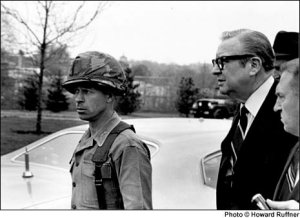 Ten days after Governor James A. Rhodes assumed office on January 14, 1963, a Cincinnati FBI agent wrote Director J. Edgar Hoover a memo stating: “At this moment he [Rhodes] is busier than a one-armed paper hanger . . . . Consequently, I do not plan to establish contact with him for a few months. We will have no problem with him whatsoever. He is completely controlled by an SAC [Special Agent in Charge] contact, and we have full assurances that anything we need will be made available promptly. Our experience proves this assertion.”
Ten days after Governor James A. Rhodes assumed office on January 14, 1963, a Cincinnati FBI agent wrote Director J. Edgar Hoover a memo stating: “At this moment he [Rhodes] is busier than a one-armed paper hanger . . . . Consequently, I do not plan to establish contact with him for a few months. We will have no problem with him whatsoever. He is completely controlled by an SAC [Special Agent in Charge] contact, and we have full assurances that anything we need will be made available promptly. Our experience proves this assertion.”

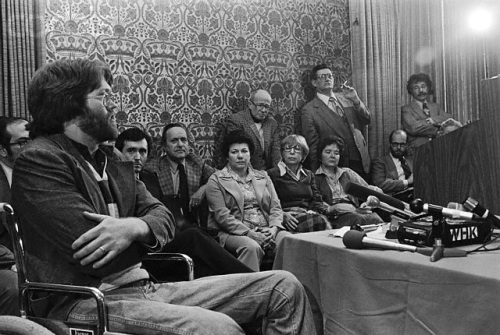
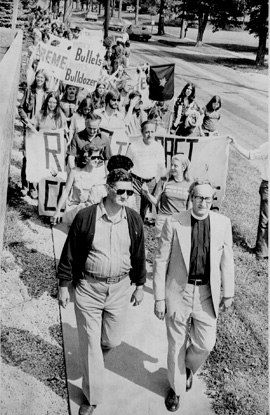
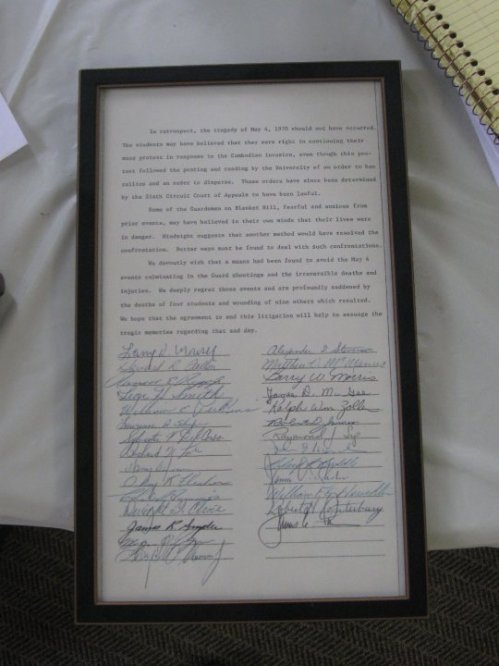
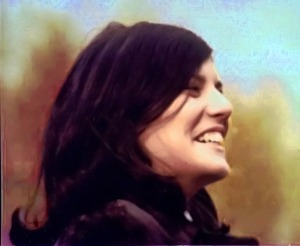
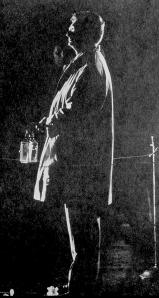
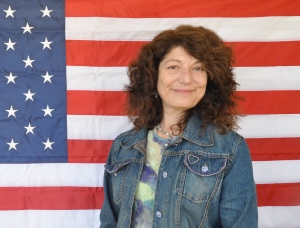
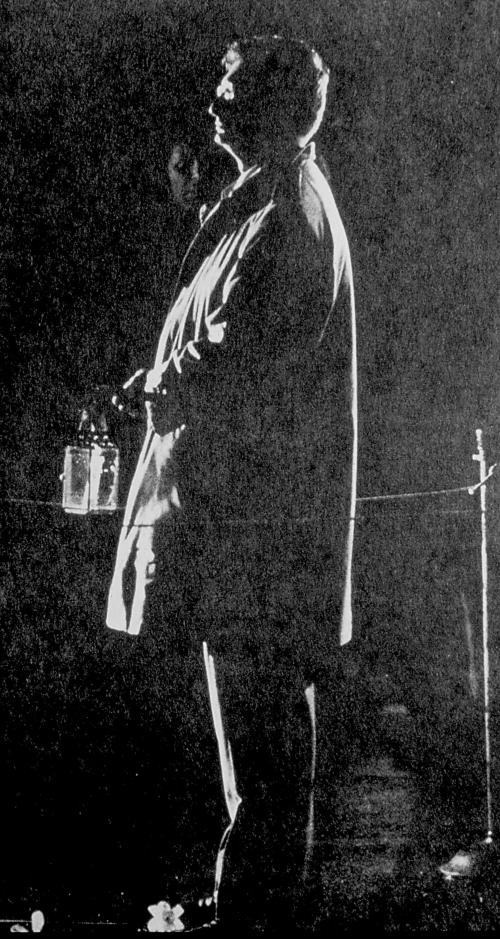
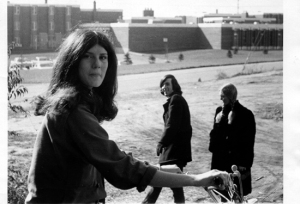

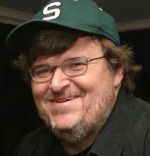

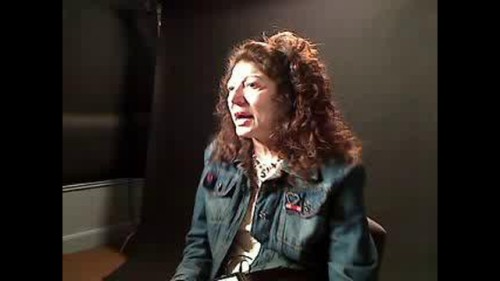 Watch Laurel Krause in her Kent State Truth Tribunal testimonial, May 1, 2010 in this live stream video.
Watch Laurel Krause in her Kent State Truth Tribunal testimonial, May 1, 2010 in this live stream video.